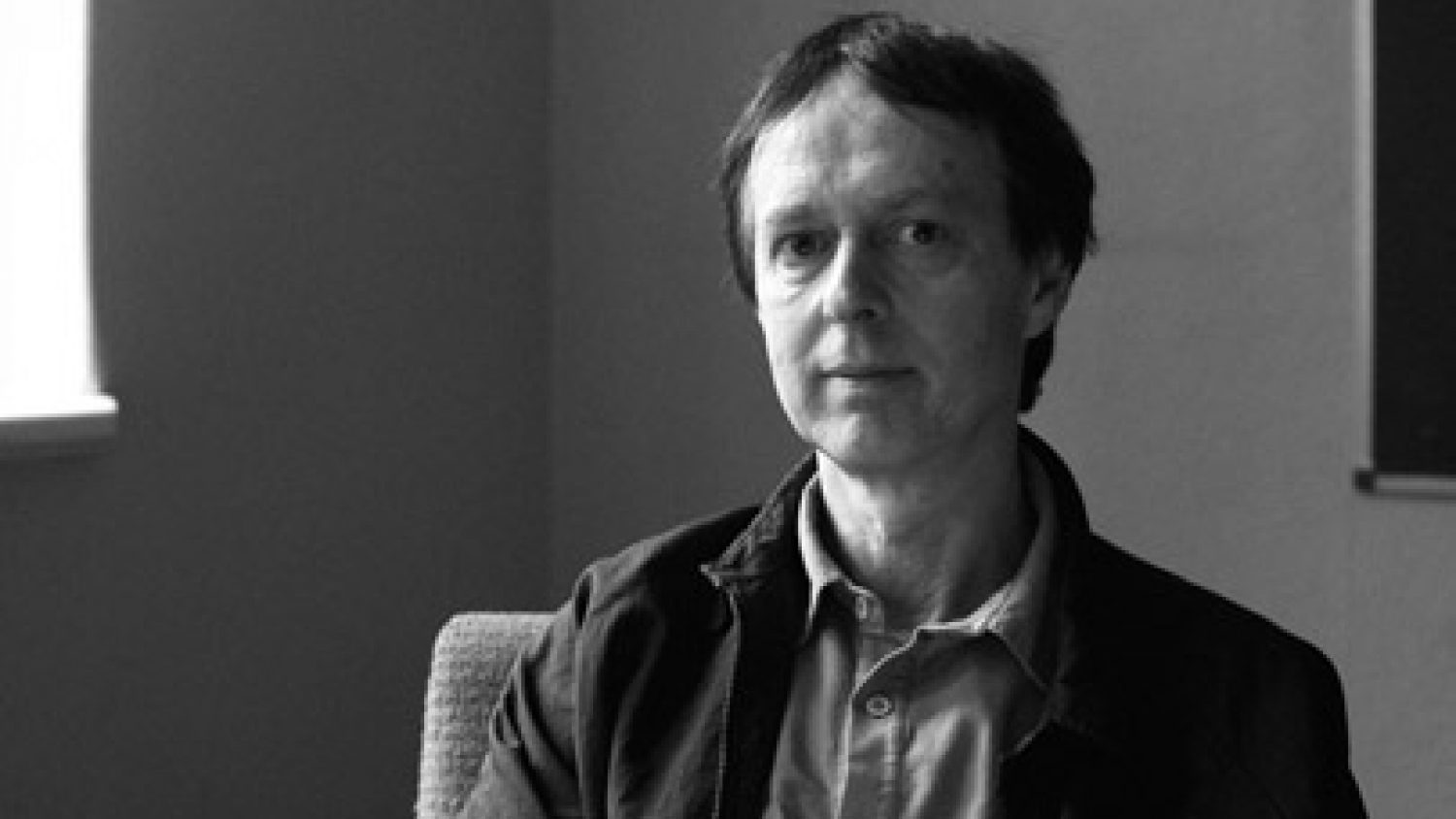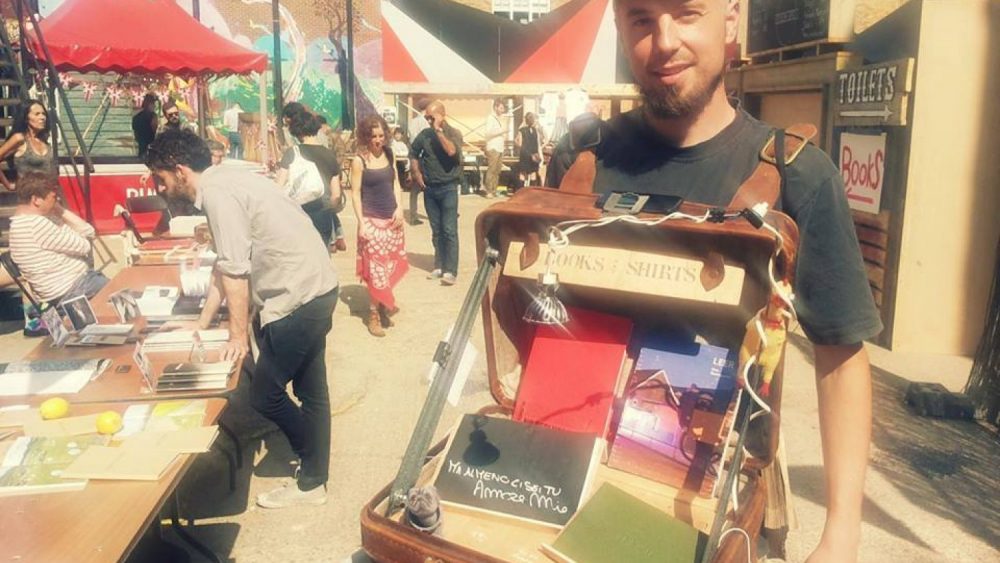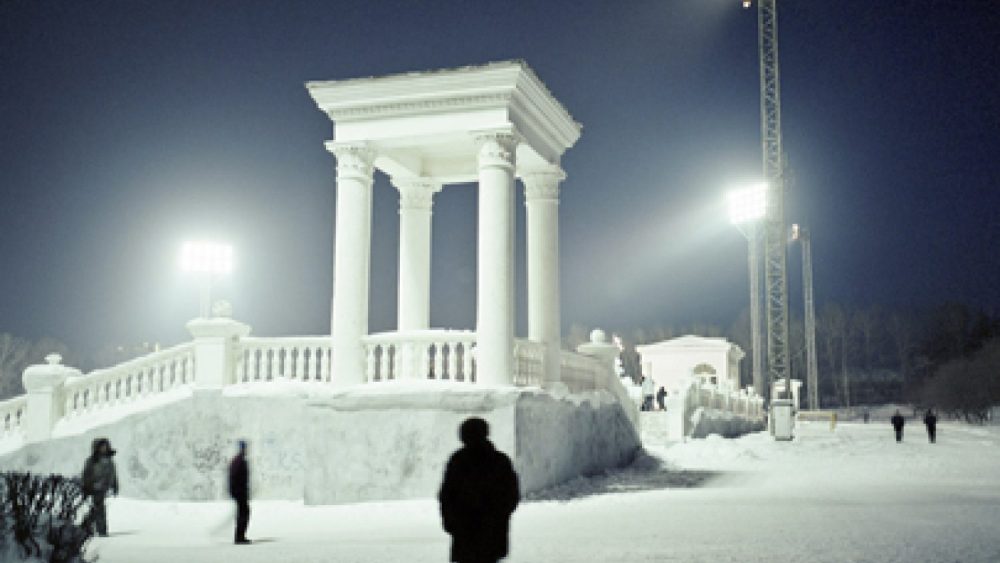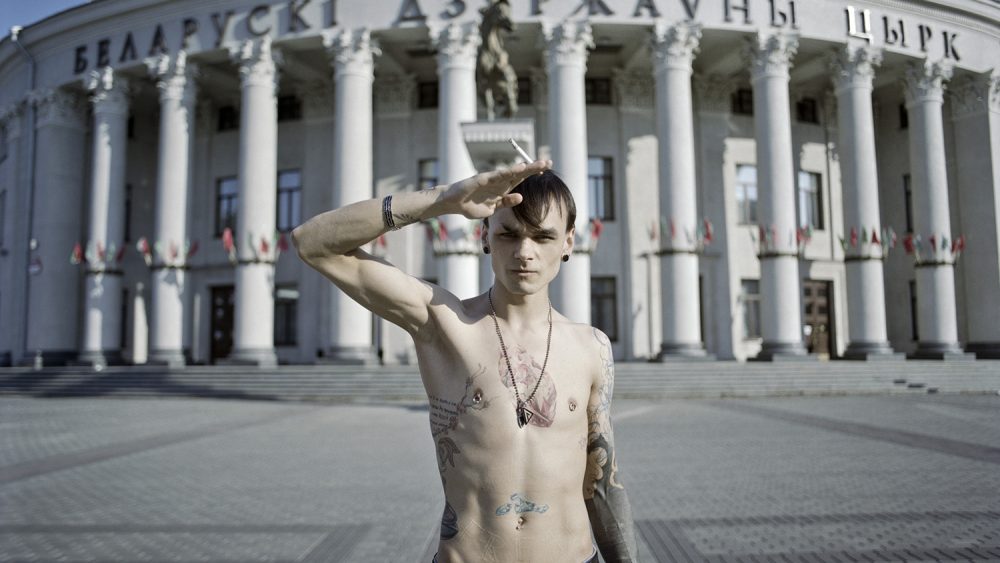Art without coincidences. Interview with David Bate
David Bate (1956) is a visual artist, teacher and writer. He was one of the first UK photographic artists to experiment with digital photographic processes. His visual work is best known by the series Bungled Memories (2008) – still life pictures of domestic accidents that have occurred in his kitchen and the series Zone (2001) where he developed the haunting alterity of Tarkovsky’s film Stalker. Among many writings, he has also published two books Photography and Surrealism (2004) and Photography: The Key Concepts (2009). He is currently leading photography research at the University of Westminster, including doctoral candidates and the MA Photographic Studies programme. This August David Bate was holding a workshop at ISSP in Kuldiga, Latvia.
How did your story about love for photography started?
When I was in school, I was working in a garage and I was very dissatisfied with my work. One day me and some friends drove to France on holiday and I bought a camera. It was a Zenit-E. So I started taking pictures and it became a passion. After that I begun to take pictures at work, a lot. Then I quit my job and I went to live in France for about a year. The people I was living with decided to go on a trip to Algeria by car. For me, it was the beginning of more serious photography. When I came back to England, I managed to get into a foundation course. That’s where I met very good and encouraging people at photography department, they liked my work, so I went to study photography.
When did you make the work Perfect Harmony which includes both – the road trip and the garage?
That was the work I exhibited when I finished the course. It was another trip to North Africa. The garage I photographed wasn’t the one I used to work at, although I have series of portraits of that place. The project was a self-portrait but I didn’t photograph myself, I photographed the place that had formed me along with the quotes from people that I had worked with. They said all kind of things like “Are you from CIA?” or “Do you want me to take my clothes off?” It revealed so much about their attitudes towards photography and the environment I come from.
Has this attitude towards the photography changed since?
I’m not sure. There are people who are still wondering what I am doing in university teaching photography, if that’s another hobby. My grandfather who lived and worked at a farm all his life asked me once why I was taking the pictures of our animals. I said to him that I wanted to take photographs and experience things through it. He said: “I don’t need to take the pictures of them because I see them every day!” It characterizes the attitude, which is still widespread, but as the life has mediated for photography, it’s harder to see the world without thinking through photographs or movies. But I’m sure that people still think that photography is just Mickey Mouse’s habit.
What is your photography about?
I’m not sure if I think about myself as a photographer anymore. Partly because when I studied, photography was a popular medium and for that reason it was useful – I begun to think I can say what was important with photography. In my experience, most photographers who work as photographers have not very much control of the meaning of their work. Yet, as an artist in a gallery system, you have much more control of what the work is, how you choose the images. In terms of defining the meaning, I certainly have my own ideas and I’m trying to think about the origins and how the world would understand, too. But in the end, it’s about the meanings that people bring to the work and not what I impose in the pictures. I think it’s more of a dialogue or translation. If people understand the work very differently from the way I intended it, I think it’s one of the interesting things. Although I wish for certain frameworks and I try to give those as much as possible, I don’t think that an artist or a photographer has the rights to decide the meaning of the work that you give to the world.
The conceptual art is not always obvious without explanatory texts. Does it matter if a spectator doesn’t understand the message?
I don’t really think that there is a message, more of an engagement. If there was a message, it would be very simple, you communicate a message as in an advert and it’s over. The artwork and documentary is more complex.
Alright, but what is the relationship between the image and the text then? What about this complexity of an artwork? If a person doesn’t have enough background or knowledge…
I’d like to think of a work having many layers or levels, and you should be able to enjoy the artwork at least in the visual level without recognizing framework. There should be something of interest, hopefully. But if you’re a bit more curious about how things link, wonder and want to check your understanding of what the work is about, then you should offer that. People talk about the texts that you have on the panels at the galleries, called “anxiety panels”, because if you don’t know what things mean in the exhibition, you can go to the panel and read an introduction. I guess, one of the things behind that question is that art doesn’t define the meaning of the things that you’re looking at. Whereas everywhere else we see photographs that have meanings predominating – in newspapers and advertising, in journalism, in books – we are always surrounded by a definition and the context gives us sort of sense of what we expect. For me, the thing to defend in art galleries is the right to daydream, to have your free associations about images, so I am not interested anymore in the text. I want to help the viewers by giving a framework to point towards the things that are interesting for me. For example, in the Estonian work (Zone where David Bate photographed the area in Tallinn where Andrei Tarkovsky’s film Stalker (1979) was also shot, ER) this was a very important issue because of the language barrier between me and the Estonian students and the population. Still, there was a film as a reference in the work, which made it easier between the two cultures to talk about a place and to avoid the problems of a text being an authority voice in the work. I wanted to allow the colours and the mood of the place as I saw them to be evoked, so the message is not really that precise. It’s about trying to report an experience for people to see it in the images, and the captions would just support – everyone who has seen Tarkovsky’s Stalker would understand.
And those who haven’t seen it?
It doesn’t matter, because we use the word “zone” in everyday life to talk about industrial zone, shopping zone. For me, there is another whole dimension to the work, which is really interesting in Freud. He talks about parts of the body as erotic zones. I think you can make an analogy between city and the body, that there are parts of the body that we think as sexual, others as thinking parts. It’s the same with the cities – you have a thinking part, a sexual and wasting part. Maybe someone saw those pictures and thought: “Why is this called Zone?” That would make them think about the relation between the places. We trigger some questions rather than give the answers.
You’ve mentioned Freud also in the series Bungled Memories with a term “Freudian slips”. Do you have a particular interest in his studies?
I have an interest in subjectivity, in how we are and in how we act as humans. That’s important at the level of culture, politics and yet the level of aesthetics. In my work, I’m interested how we respond to things, how we deal with situations and the things we don’t know ourselves about, our subjectivity. Psychoanalysis is very good at helping us to see the things we don’t know about ourselves. It’s one of the fields that has been important in the past for me to think with.
You’ve said that you loved both – photography and words…
Yes, it’s like having two lovers (laughs). It’s complicated and it can be very productive but sometimes it can be quite difficult because finding time to do both is not easy. It’s not difficult to separate them but in some ways it’s quite strange. If you’re articulate in your writing, people think you can’t be an artist, and if they see your work as an artist, they think you shouldn’t be a writer. When you look back in the history of art, particularly in the 1920-ies and 1930-ies, you will notice how many photographers were producing manifestos. This division between words and pictures has become a division of labour in modern life – there are critics and photographers, there are historians, but if you traverse these, you’re somehow banished. I think it can be quite difficult in the UK because some people, curators, are sometimes nervous if you’re articulate and write books. They think you might know more than them about curating, it’s a complication.
You’re also teaching.
Yes, I’m lucky because my teaching involves both things. I don’t show my work, so it’s not a master class or workshop. It’s a programme where we teach students critical thinking, some theory and some history, and some practice. Teaching is important, I do like it. It has to be balanced with other things.
What do you acquire from teaching?
Sometimes it’s a way to find out what I know. The dialogue with the students is very productive for checking if your thinking is not going a little bit crazy. Also, in some ways, students know more than I do about things that are important in photography. It helps everyone to be able to talk about photography, as well as do it.
Lately, you’ve worked more on social problems, like globalization in Australian Picnic and nightlife in Touristicus. What brought you there, to work on these subjects?
Both of them were invitations to make work. I was presented with a problem or situation. In Estonia, I couldn’t go back and have the same not-knowing about the place when you first visit. I had to do something else. Logically, it made sense to be, to become a tourist and hang out that way (David Bate photographs the nightlife in Tallinn as being an English tourist, ER). In Australia, I had already spoken at a conference about photography and globalization and there were many people who had done a residency, as Allan Sekula. I was invited on that basis to do something. These works, in a way, continue the themes I’ve been doing earlier, which is again a dialogue between a private space and a public space, the interaction. The experience of globalization in the project is really about the subjective experience of life and globalization. I’m not trying to document the way that McDonald’s has exploded but the game about the subjective experience. It’s the same about the tourism in Estonia, I’m trying to imagine and represent the subjective experience of a tourist. Maybe ironically and critically, but nevertheless to show something of that experience. My students go to night clubs in London and take photographs, but I think that their experience would be completely different from mine and that’s why I would encourage them to do things close to their lives, talk about their experiences. There are good journalists that talk about other people’s experiences but I’m not ready to take that position. Maybe writing is a better form for that, you can use evidence in it.
Do you think that photography has a role?
Photography is incredibly popular in galleries and that’s because it’s a medium that people can engage with and in some ways it’s easy to enjoy. If the gallery is a space to enjoy images, that’s great. At another level, for me, the enjoyment should be linked to something and at the end there should be something enigmatic. When I talk about subjectivity, it’s not just my experience. It’s a way to think about things – life, culture, social and political implications. It’s a space that involves enjoyment which is attached to some other type of desire as well.
Where is the documentary photography going?
Maybe it’s disappearing from photography and appearing somewhere else. Probably the best documentary work is in television, like HBO documentary series. In a way, documentary has to rethink itself because of the internet. So many people can do documentary work and put the images online, that photographers are trying to find another language of storytelling. It seems to be going towards the internet and other media, and, of course, this is also to do with technologies. The technologies made the documentary what it was in the 1930-ies. Formally there are many possibilities to develop documentary but the subject matter in documentary also must change. Maybe we are going to see some interesting work, a different aesthetics coming from other parts of the world, within China and the Middle East.
What other tendencies do you see in photography world? How do they influence the medium, the authors, the institutions?
The thing people call “citizen journalism” has been very important in political events – individuals who got cameras have serious aspirations, they are documenting events and then putting the pictures online. BBC invite people to submit their own photographs and footage and they publish them online. People are contributing to the mass media. That dynamics of participation, it’s a very important change. And the use of movie footage has become more important too – you can grab a frame from that and it has changed the way how we look at photographs. In a way, the values of documentary photography as they were begin to mutate, they all are beginning to hybridize each other. I imagine in the late 1920-ies and early 1930-ies, the excitement when Walter Benjamin is trying to write about the impact of photography to experience the world. This is what we need to think and talk about more in the theory of photography, for example, thinking how it operates to us today. We need to re-conceptualize the whole arrangement. Everything is becoming transparent. We talked about Freud here, I think the kind of world that Freud was writing about – where sexuality was repressed – now occupies a very different place in Western culture. You see much more of open attitude towards sexuality, men and woman are much more publicly talking about their private and sexual lives, their relationship problems. This is now a part of public life and the visualization of private life has transformed our public world. Couple of people in psychoanalysis and social theory are beginning to talk about this. It’s important how the whole world has now become photographed. We can’t think about making photographs in the same way.
With all the tools we have, how much do we think about the quality?
Walter Benjamin had something to say about the quality long time ago; it’s not only a quality of something, it’s also motivation of it, its purpose. Aesthetics having a high principle like a religious doctrine can become a problem, it’s quite clear that values of photography are again mutating because of the digital processing; the digital television is probably the dominant form as we see an image. We see now most of the pictures on the screen, that is changing the aesthetics. Magazines and books are still prolific but not on daily basis when we look at the images on different screens – computer, television, phone or public data screen. I find quite a beauty in the pixilation of images in the same way that impressionists find beauty in fuzzy paintings and photographs. The luminosity that screens provide is quite similar to some of the very vibrant Dutch paintings from the 17th century. A high definition aesthetics is now becoming a dominant form and against that the hipster fuzzography is developing. It is slightly nostalgic of the old photographic chaos that is now being simulated on the computer, but at the same time that simulation also changes.
You’re also participating in the game with your series Phonepics!
Yes, I’ve been experimenting. This is the dream camera that people wanted to work with in the 1920-ies. It’s important to explore the new tendencies. I think it was Michel Foucault who said that it was important to get there before the police did. So if you open up the possibility of technology to create not just for instrumentalist uses… There are several photographers, like Joel Meyerowitz who made this project in Dubai “i-Dubai”. I think it’s great that photographers are playing with these things and trying to think how and why you can use them. But I’m a digital immigrant, I grew up in the analogue world. I just got an iPhone and started to do a little series with it on the everyday life. I’ve been busy teaching and trying to do my work, so my motto is to make work as part of my life and not burden on it. Everyday routines have the symptoms of our happiness and unhappiness.
What about ethics in this all-accessible world? Do people see an issue there?
It’s a consequence in a change of boundaries in the internet and we haven’t quite recognized it yet. People are beginning to think about it because it’s becoming a problem. People are part of an experiment. The law in the UK is becoming interested in this and there are cases becoming to appear. That is going to grow because we have to negotiate the possibilities of images floating around on ourselves, which is in a way an invasion of privacy, but it’s not seen by others in the same way.
You mentioned Walter Benjamin a few times, too. Do you think we have such strong thinkers in the theory of photography and aesthetics nowadays?
Maybe new and strong theories will come from unexpected areas where people will help to understand what’s happening, and not the existing theorists. It’s hard to see because we’re in it and it’s changing very fast. I see some interesting work happening in psychoanalysis now, because in clinics it always has to deal with questions of visualization and privacy and public. In terms of social networking, the kind of mathematical theories that relate to systems and archives will become quite important. I find conceptualism interesting as a wish to find a way to arrange materials.
Please share your latest appreciations in the photographic field!
The last thing that has stuck in my head ever since I saw it, is Chris Marker’s work Passengers. It’s a remarkable piece of work!



